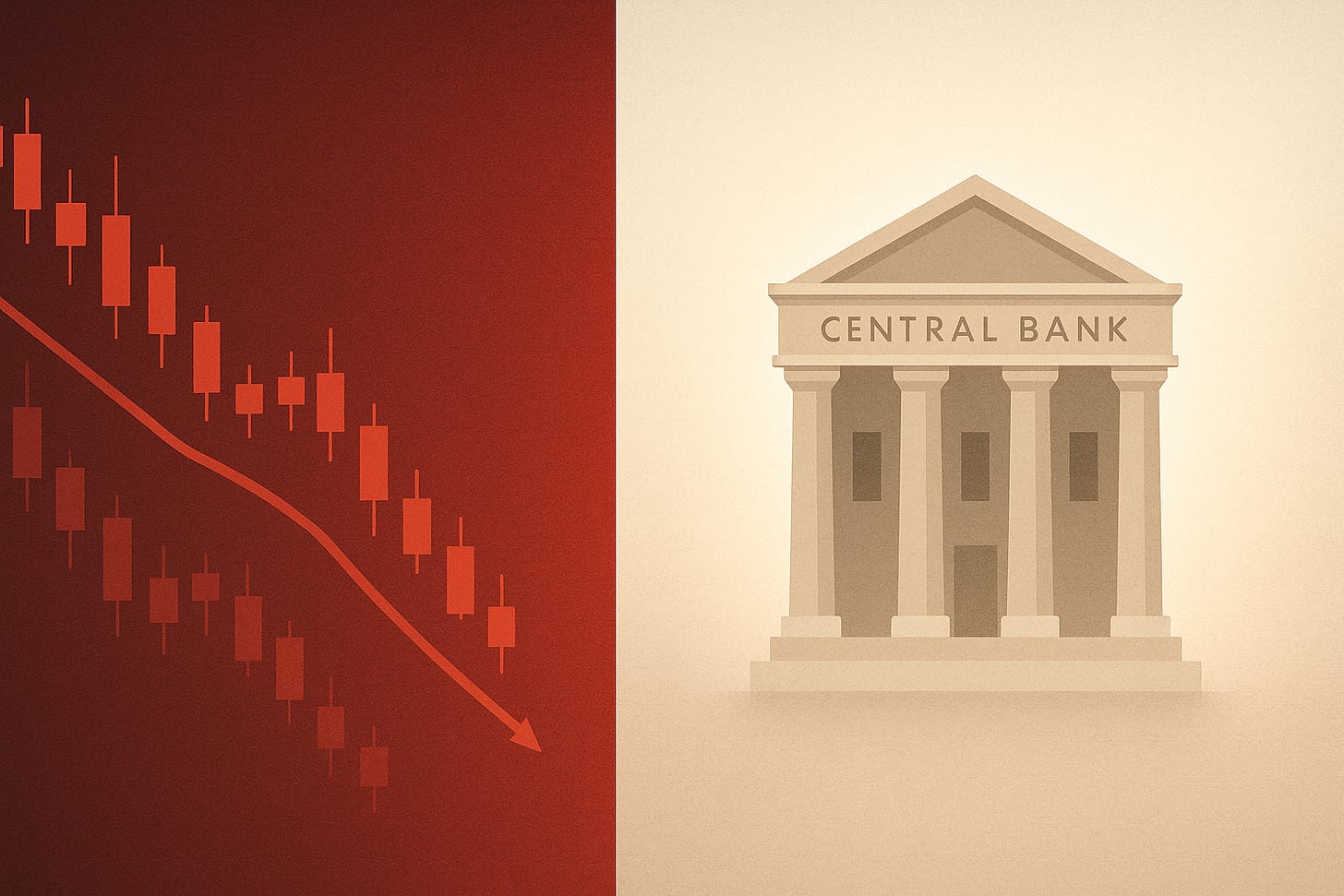Key Takeaways
Rate-cut bets surged after delayed labor data showed softening conditions, pushing Treasury yields and the dollar lower even as weekly equity performance remained negative.
Market leadership showed visible strain, with tech—especially Nvidia—failing to rally despite strong earnings, highlighting valuation fatigue.
Policy visibility remains limited, with the cancellation of key inflation data leaving the Fed and markets “flying through fog” ahead of the December meeting.
Tentative Russia-Ukraine peace signals triggered swift sector rotations, pulling down defense stocks and sending oil to one-month lows.
A year-end rally is still possible, but the risk backdrop is tightening, with uneven consumer strength, geopolitical instability, and stretched valuations all tempering the optimism around a Fed pivot.
Cut Coming, But At What Cost?
The past week left investors wrestling with contradictory signals. A late-week rally followed long-delayed labor data that finally pointed to softening conditions, raising hopes that the Federal Reserve may deliver a year-end rate cut. Markets responded quickly: Treasury yields slipped, the dollar weakened, and risk appetite firmed.¹²³⁴
Even so, those gains could not salvage a difficult week. All three major U.S. equity indexes ended lower as concerns about stretched valuations and uneven economic momentum continued to weigh on sentiment.⁵ Big earnings beats from Nvidia and Walmart did little to calm nerves.⁶ By the close, the Dow and S&P 500 were down roughly 2%, while the Nasdaq fell nearly 3%.⁷ The result was a market torn between anticipation of easier policy and unease about the deeper forces prompting that shift.
Pivot Hopes in a Policy Fog
Much of the week’s narrative revolved around growing conviction that the Fed may cut rates in December. Yet that conviction emerged in an unusual vacuum. The 43-day government shutdown halted key releases, and the Bureau of Labor Statistics ultimately canceled the October inflation report entirely.⁸ Policymakers found themselves “driving in the fog,” missing the data that normally guides their decisions.⁹
Without CPI, traders leaned on the Cleveland Fed’s nowcast, which continued to show inflation running near a 3% annual pace.¹⁰ Then came the delayed labor report: hiring topped forecasts, but unemployment unexpectedly rose to a four-year high.¹ That hint of slack was enough to flip expectations rapidly.
New York Fed President John Williams, previously seen as leaning hawkish, signaled that “further adjustment” might be warranted—his clearest nod yet toward a possible cut.¹¹ Futures markets reacted immediately, with odds of a December cut jumping sharply.¹²
Still, the policy debate remains unsettled. Dallas Fed President Lorie Logan and Boston Fed President Susan Collins emphasized patience, arguing that policy may already be sufficiently restrictive.¹³¹⁴ Analysts remain split, with major brokerages divided on whether the Fed will actually move next month.¹⁵
The market’s internal behavior reflected this tension. Tech—the defining leadership group of the year—showed signs of strain. Nvidia’s latest blockbuster results failed to lift the stock, a sharp contrast from earlier in the AI-driven rally.¹⁶ Nvidia finished the week nearly 6% lower.¹⁷ The Nasdaq, which surged for months on AI enthusiasm, now sits roughly 7% below its peak.¹⁸
Keep reading with a 7-day free trial
Subscribe to The Lead-Lag Report to keep reading this post and get 7 days of free access to the full post archives.



